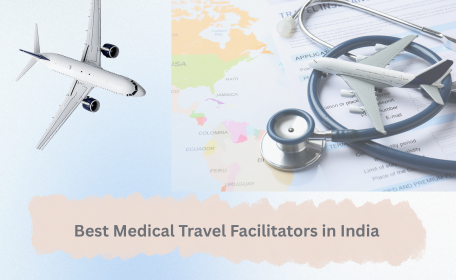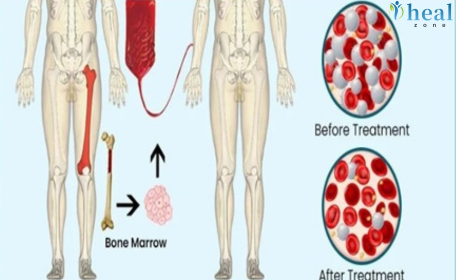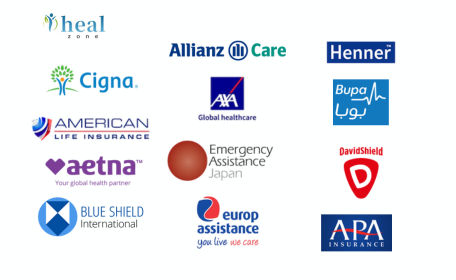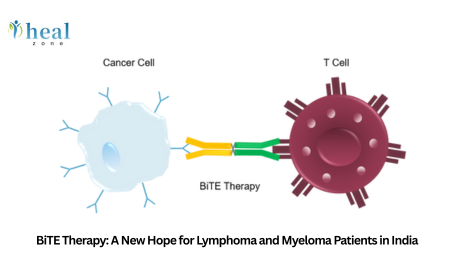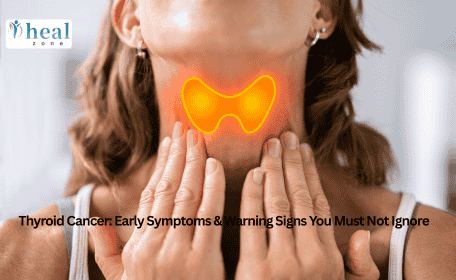Contact us
Pediatric Blood Cancers: Causes, Symptoms, Diagnosis, and Treatment
By Shaivana Bano
13 October 2025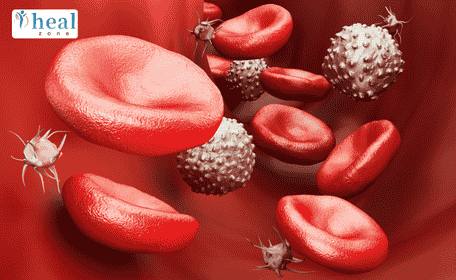
- What is Pediatric Blood Cancer?
- Understanding How Blood Cancer Develops in Children
- What are the Causes and Risk Factors of Pediatric Blood Cancer?
- What are the Common Symptoms of Pediatric Blood Cancer?
- How is Pediatric Blood Cancer Diagnosed?
- What are the Treatment Options Available for Pediatric Blood Cancer?
- What is the Cost of Pediatric Blood Cancer Treatment in India?
- Factors Affecting Cost of Treatment of Pediatric Blood Cancer In India
- Practical Tips for Parents Managing Costs
- Reach out to HealZone’s network.
- Prognosis and Survival Rate
- Life After Treatment: Long-Term Care and Monitoring
- Early Detection Tips for Parents
- Living with Pediatric Blood Cancer: Support and Community
- Conclusion: Turning Fear into Hope
Imagine this: a bubbly five-year-old who once ran through playgrounds suddenly starts feeling too tired to play. Bruises appear on their arms, fevers come and go, and the sparkle in their eyes fades. Parents think it’s just another viral infection, until the doctor mentions something no one wants to hear:
“We need to check for leukemia.”
Every year, thousands of families worldwide face this heartbreaking reality. Pediatric blood cancer, a term most parents have never heard before, quickly becomes the center of their lives. But here’s the powerful truth: today, more children survive blood cancer than ever before. Thanks to advanced treatments, early diagnosis, and global awareness platforms, what was once considered a death sentence is now a battle many children can win.
Let’s take a compassionate, easy-to-understand look at how this disease develops, how it’s treated, and how science, along with human resilience, is helping children get their lives back.
What is Pediatric Blood Cancer?
Pediatric blood cancer, also known as childhood blood cancer or childhood leukemia, refers to a group of cancers that begin in a child’s blood-forming tissues, such as the bone marrow, lymphatic system, or blood cells.
Unlike solid tumors, blood cancers circulate throughout the body. That means they can affect many organs, including the liver, spleen, and lymph nodes.
There are three main categories of pediatric blood cancer:
Leukemia
Leukemia is the most common cancer in children. It accounts for nearly one-third of all pediatric cancers. It originates in the bone marrow, the place where blood cells are produced.
In leukemia, the bone marrow produces an excessive number of abnormal white blood cells (WBCs) that do not function properly. These abnormal cells crowd out healthy ones, leading to infection, anemia, and bleeding problems.
Common types include:
- Acute Lymphoblastic Leukemia (ALL) is the most common type of childhood leukemia.
- Acute Myeloid Leukemia (AML) is the less common type, but it is more aggressive.
- Chronic Myeloid Leukemia (CML) is rare in children, but it is possible.
Lymphoma
Lymphoma affects the lymphatic system, a network of vessels and glands that help fight infections. There are two main types:
- Hodgkin Lymphoma (HL) is usually found in older children or teenagers.
- Non-Hodgkin Lymphoma (NHL) tends to grow faster but can be cured in many cases with modern therapy.
Myeloma (rare in children)
While multiple myeloma is common in adults, it is extremely rare in children. However, related disorders may sometimes appear in teenagers.
Understanding How Blood Cancer Develops in Children
Our blood cells are produced in the bone marrow from stem cells, which can develop into red cells, white cells, or platelets. In pediatric blood cancer, genetic mutations occur in these stem cells.
These mutations cause cells to:
- grow uncontrollably,
- avoid normal cell death, and
- fail to mature into healthy cells.
Over time, these abnormal cells multiply and replace normal blood cells. As a result, the child’s immune system weakens, oxygen supply drops (due to fewer red blood cells), and the blood’s ability to clot decreases.
Although scientists don’t always know the exact cause, several risk factors may increase a child’s chance of developing leukemia or lymphoma.
What are the Causes and Risk Factors of Pediatric Blood Cancer?
The causes and risk factors of pediatric blood cancer are:
Genetic Factors
Some children inherit gene mutations that make them more prone to cancer. For example:
- Down syndrome (Trisomy 21) increases leukemia risk.
- Li-Fraumeni syndrome and Fanconi anemia also raise susceptibility.
- Inherited immune deficiencies can lead to lymphomas.
Environmental Exposures
Although less common, certain environmental factors may contribute:
- Exposure to radiation (such as from X-rays or cancer treatment).
- Contact with benzene or other chemicals.
- Previous chemotherapy or radiation therapy for another condition.
Viral Infections
Some viruses, such as Epstein–Barr Virus (EBV), are linked to Burkitt lymphoma or Hodgkin lymphoma in children.
Random Genetic Mutations
In most cases, the cause is not inherited or environmental. Random DNA mutations during cell division can lead to uncontrolled cell growth, triggering cancer.
What are the Common Symptoms of Pediatric Blood Cancer?
Because blood cancer affects many body systems, symptoms can be broad and vague, often mimicking everyday illnesses. Parents and doctors must stay alert to persistent or unusual signs.
General Symptoms
- Frequent fever or infections due to low white cell count
- Pale skin and tiredness from anemia
- Unexplained weight loss or appetite loss
- Night sweats or fever without infection
Specific Symptoms
- Easy bruising or bleeding (nosebleeds, gum bleeding, small red spots on skin)
- Bone or joint pain (especially in legs and back)
- Swollen lymph nodes in the armpits, neck, or groin
- Abdominal swelling due to liver or spleen enlargement
- Breathlessness or chest pain (if lymph nodes enlarge in the chest)
Children may also appear unusually tired, irritable, or uninterested in play. Persistent symptoms lasting more than two weeks should be evaluated by a doctor.
How is Pediatric Blood Cancer Diagnosed?
Early and accurate diagnosis of blood cancer is crucial for effective treatment. Your doctor will perform a series of tests to determine the type, stage, and extent of the cancer.
- Blood Tests: A complete blood count (CBC) checks for abnormal white or red blood cell levels. Abnormal results may signal leukemia.
- Bone Marrow Biopsy: A small sample of your bone marrow (usually taken from the hip bone) is taken. It is examined under a microscope to detect cancerous cells. This is a key diagnostic step.
- Flow Cytometry and Immunophenotyping: These tests identify the specific cell type (e.g., B-cell or T-cell leukemia), helping doctors choose targeted treatment.
- Genetic and Molecular Testing: Certain genetic abnormalities, like BCR-ABL, MLL rearrangement, or TEL-AML1 fusion, influence treatment choices and prognosis.
- Imaging Tests: CT scans, MRI, and ultrasound detect if cancer has spread to organs or lymph nodes.
- Lumbar Puncture (Spinal Tap): Doctors check if cancer cells have spread to the brain or spinal fluid. This guides whether additional therapy is needed for the central nervous system.
What are the Treatment Options Available for Pediatric Blood Cancer?
Modern treatment has dramatically improved survival rates, from less than 10% in the 1960s to over 85% today for acute lymphoblastic leukemia (ALL).
Treatment depends on several factors:
- The type and stage of cancer
- The child’s age and general health
- The genetic features of the cancer
Let’s explore the major treatment types.
Chemotherapy
Chemotherapy is the backbone of treatment for pediatric blood cancers. It uses powerful drugs that kill cancer cells or stop them from multiplying.
Treatment often happens in phases:
- Induction phase: Rapidly destroy cancer cells and achieve remission.
- Consolidation phase: Prevent the recurrence of hidden cancer cells.
- Maintenance phase: Lower doses over months or years to maintain remission.
Common side effects include nausea, hair loss, mouth sores, and fatigue, but most are temporary. Children usually receive supportive care (like anti-nausea meds or blood transfusions) to reduce discomfort.
Radiation Therapy
Radiation therapy uses high-energy rays to target and destroy cancer cells. In children, it’s used carefully because radiation can affect growth and development. It’s usually reserved for:
- Leukemia that has spread to the brain or spine
- Certain types of lymphoma
Bone Marrow or Stem Cell Transplant
A bone marrow transplant (also known as a stem cell transplant) is a procedure that replaces damaged bone marrow with healthy stem cells.
It’s often recommended if:
- The leukemia doesn’t respond to chemotherapy.
- The cancer returns (relapse).
- Genetic tests show high-risk abnormalities.
There are two main types:
- Autologous transplant: Uses the child’s own cells (less common in leukemia).
- Allogeneic transplant: Uses a donor’s cells (from a sibling or unrelated match).
Although it’s a complex procedure with risks (like infection or graft-versus-host disease), it offers a potential long-term cure for many children.
Targeted Therapy
Targeted therapies are newer treatments that attack cancer cells without harming normal cells. Examples include:
- Tyrosine kinase inhibitors (TKIs) such as imatinib for BCR-ABL–positive leukemia
- Monoclonal antibodies target specific proteins on cancer cells
These treatments are less toxic than chemotherapy and are often used alongside it.
Immunotherapy
Immunotherapy harnesses the child’s immune system to fight cancer. One breakthrough example is CAR-T cell therapy, where a patient’s T-cells are modified in the lab to recognize and destroy leukemia cells. This therapy has shown success in children whose leukemia returned after other treatments.
Supportive and Palliative Care
Supportive care focuses on improving quality of life by managing pain, infections, and side effects.
It includes:
- Blood transfusions
- Antibiotics or antifungals to prevent infections
- Nutritional support
- Psychological counseling for the child and family
Even after active treatment ends, ongoing monitoring ensures early detection of late effects.
What is the Cost of Pediatric Blood Cancer Treatment in India?
The cost of treating pediatric blood cancer in India varies widely based on the type of cancer, treatment plan, hospital, and city. The good news is that India offers world-class pediatric oncology care at a fraction of the cost seen in Western countries, without compromising on quality or survival rates.
Here’s a detailed overview:
- Initial Diagnosis (Blood Tests, Bone Marrow Biopsy, Imaging) USD 300 - USD 900 Includes pathology, genetic testing, and imaging.
- Chemotherapy (Full Course) USD 5,000 - USD 15,000 Varies by type, duration, and hospital; usually spans 6-12 months.
- Targeted Therapy / Immunotherapy USD 3,500 - USD 12,000 (per cycle) High-end therapies like CAR-T or monoclonal antibodies are costly but highly effective.
- Radiation Therapy (if needed) USD 1,800 - USD 3,600 Limited use in children, mostly for lymphomas or CNS involvement.
- Bone Marrow / Stem Cell Transplant USD 20,000 - USD 30,000 Depends on donor type (related/unrelated), hospital, and post-care.
- Follow-Up and Supportive Care USD 600 - USD 2,400 (per year) Includes blood tests, transfusions, physiotherapy, and counseling.
For complex bone marrow transplants, expenses can go up to USD 35,000, still nearly one-fifth of what similar treatment costs in the US or Europe.
Due to this significant cost advantage, many international families, particularly from the Middle East, Africa, and Southeast Asia, travel to India in search of affordable pediatric leukemia treatment without compromising on safety or success rates.
Factors Affecting Cost of Treatment of Pediatric Blood Cancer In India
- Type of Blood Cancer: Treatment for acute lymphoblastic leukemia (ALL) is often less expensive than that for acute myeloid leukemia (AML) due to shorter treatment cycles.
- Hospital Type: Government hospitals offer heavily subsidized treatment while private hospitals provide advanced care at higher prices.
- Treatment Duration: Chemotherapy and recovery may take 6 months to 2 years.
- Complications or Relapse: If cancer returns or causes severe side effects, additional therapy raises costs.
- Location: Metro cities (Delhi, Mumbai, Bengaluru, Chennai) tend to have slightly higher costs than tier-2 cities.
Medical tourism facilitators like HealZone help parents compare hospitals, estimate treatment budgets, and connect with trusted specialists, ensuring transparency and confidence throughout the journey.
Practical Tips for Parents Managing Costs
Parents should:
- Get multiple opinions before finalizing a hospital or treatment plan.
- Ask for a detailed cost estimate, including tests, hospital stay, and post-treatment expenses.
- Explore crowdfunding platforms that specialize in pediatric cancer cases.
- Connect with NGOs for emotional and financial support.
Reach out to HealZone’s network.
While the financial burden of pediatric cancer treatment can seem overwhelming, India’s medical ecosystem ensures that no child is denied care due to cost. With HealZone, families can navigate both the emotional and financial challenges of treatment more confidently.
Prognosis and Survival Rate
Thanks to scientific progress, survival rates for pediatric leukemia now exceed 85-90% in many countries. For lymphoma, cure rates can reach 90-95% with proper treatment.
However, outcomes vary depending on:
- Type of cancer: ALL generally has better outcomes than AML.
- Age at diagnosis: Children aged 1–10 often respond best.
- Genetic markers: Some mutations predict a better or worse prognosis.
- Response to initial therapy: Early remission is a good sign.
- Access to specialized centers: Hospitals with pediatric oncology teams provide optimal care.
Life After Treatment: Long-Term Care and Monitoring
Beating cancer is only the first step. Long-term care ensures survivors live healthy, fulfilling lives.
Regular Follow-Up
Doctors monitor for:
- Cancer relapse
- Secondary cancers
- Organ function (especially the heart, liver, and kidneys)
- Growth and hormonal issues
Emotional and Mental Health
Survivors often face anxiety, school difficulties, or emotional trauma. Counseling, peer support groups, and educational resources help children reintegrate into normal life.
Physical Health and Lifestyle
A healthy diet, regular exercise, and infection prevention strengthen recovery. Avoiding smoking or unnecessary radiation exposure is also crucial.
Early Detection Tips for Parents
Parents play the most important role in early diagnosis.
Here’s how to stay alert:
- Pay attention to persistent fevers, fatigue, or pale skin.
- Watch for easy bruising or unexplained bleeding.
- Seek medical advice if your child has bone or joint pain.
- Request a blood test if symptoms persist for more than two weeks.
- Keep vaccination records up to date.
- Choose a hospital with pediatric oncology expertise.
Early detection often means simpler treatment, fewer side effects, and a much higher chance of full recovery.
Living with Pediatric Blood Cancer: Support and Community
A diagnosis affects not only the child but the entire family. Emotional and social support can make a huge difference.
- Join support groups: Connecting with other families can reduce isolation and provide practical advice.
- Involve schools: Teachers should be informed about the child’s condition, as fatigue or hospital visits may affect attendance.
- Seek financial and psychological counseling: Many organizations offer help for treatment costs and emotional support.
Modern pediatric cancer centers also include child life specialists, who use play and art therapy to help children cope with hospital stays.
Conclusion: Turning Fear into Hope
Pediatric blood cancer is one of the most studied and treatable childhood cancers today. With early diagnosis, advanced therapies, and emotional support, children are living longer, healthier lives than ever before. Behind every success story are brave families, skilled doctors, and organizations like HealZone that combine compassion and knowledge.
Remember, awareness saves lives. Every parent, teacher, and caregiver who learns the early signs of childhood leukemia could be the key to keeping a child’s future.
Contact us
Written by
B.Sc. & M.Sc. in Medical Imaging Technology


Dr. Gaurav Kharya
MBBS, MD, DM, Fellowship
Pediatric Hematologist, Pediatric Oncologist
24 Years Years of Experience


Latest Blogs
Reviews
I am Fadel Abu Muhammad from Tal Afar, Iraq My father had a brain tumor. We traveled to India to Accord Specialty Hospital, New Delhi, through a resident professor, Muhammad, Dr. Vikram, who called for a laparoscopic tumor removal operation. Thank God I thank the translator, the doctor, and all the hospital staff.
Posted On
I am Muhammad Reda from Baghdad, Iraq I was suffering from weakness in my left hand. I underwent tests and it turned out that I had a brain tumor. The translator, Muqeem Muhammad, contacted us and we traveled to India. I had a neuronavigation procedure performed by Dr. Sandeep Vashya Praise be to God, the operation was completed successfully on the computer At Fortis Hospital New Delhi I thank the translator and the doctor
Posted On
All our gratitude and appreciation to the wonderful translator Mohammed Muqeem, who was truly a great support and companion during our journey for my mother’s treatment in India. He was extremely helpful, deeply understanding of all our needs, patient, and dedicated in his work, which eased a lot of the hardship and challenges we faced being away from home. His presence with us was not just about translating words but about offering real human support in every situation and every moment. May God bless him and reward him greatly for all he has done for us.
Posted On
I'm Emad Mohammed Khadir from Iraq. I was suffering from cirrhosis and liver cancer. I came to Fortis Hospital in India to see Dr. Ankur Bahil, a consultant oncologist, with the help of our translator, resident professor Mohammed Al Hindi. Thank God, we received our chemotherapy doses. The doctor and all the hospital staff were very kind and helpful. May God bless them all. Thank you.
Posted On
I am Redha Fadel from Nasiriyah, Iraq. I had a bone tumor, osteosarcoma. I traveled to India to see Dr. Ankur, a cancer specialist at Fortis Hospital, with the help of Hill Zone Medical Tourism Company, Professor Muqeem Muhammad Al Hindi. I thank you for your humanity and services.
Posted On
Peace be upon you. I am from Iraq. My brother is suffering from a tumor in his left thigh (osteosarcoma). We came to Al-Nahda for treatment. We stayed at Fortis Hospital for two months. We are now going to Iraq and will return to India to complete the treatment and the joint replacement surgery. I would like to thank the polite Indian translator, Muqeem Mohammed Al-Hindi. He was our brother before he was a translator and he helped us a lot with my brother's illness. Thank you, Muqeem. Thank you, Fortis Hospital. Thank you, Dr. Ankur.
Posted On
Peace be upon you, I'm from Iraq. My name is Majid Mazhar Kazim. My brother was suffering from tumors, so we contacted a resident professor, Muhammad Al-Hindi, and we sent him medical reports. He received us from the airport in New Delhi. I highly recommend him to Iraqi patients. He is helpful and well-mannered. He didn't hold back on us and didn't leave us alone from the first day until the last. He also took us to the airport. I thank them all.
Posted On
I am Mohammed Kazim from Iraq, from Babylon. My brother Mushtaq was suffering from meningitis. We came to India to Fortis Hospital through our resident professor, Mohammed, the director of Hill Zone Medical Services. I thank them for their kind treatment and translation. It was an enjoyable and fruitful trip. Praise be to God.
Posted On
I am from iraq tilafar, i came to India for my treatment an immune disease, i am thankful to Mr Muqeem and hospital staff, Marego Asia Hospital
Posted On
I am from Iraq. My son was suffering from Hirayama disease. I called Heal Zone, and they arranged our treatment journey. Now my son is in good health, and his finger movement has come back.
Posted On


